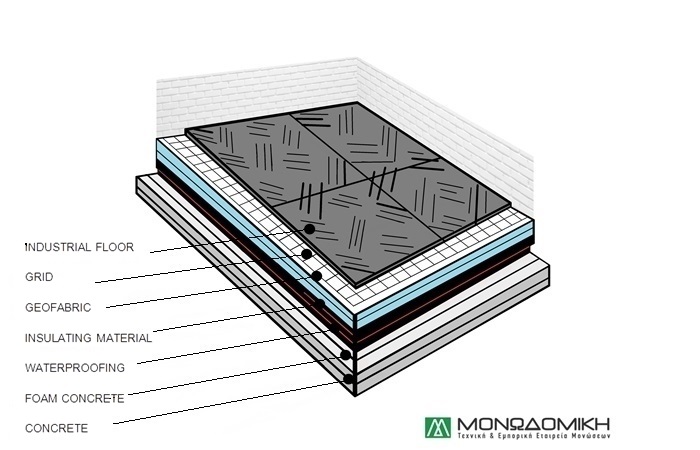
Inverted insulation:
in this construction we place the thermal insulation above the waterproofing. It is suggested in cases where there is a possibility to drill over the final insulation coating (biomass flooring) by creating vertical elements in it or in cases where the roof is not visitable (gravel). This way we know that our waterproofing layer will not be injured.
Observation: In the case of inverted insulation there is a question of limitation as to the choice of the thermal insulation material. This is because the thermal insulation is in a position overlying the waterproofing, it leaves it exposed to rainwater. For this reason, a material should be selected which is not affected by moisture to the greatest extent possible, such as extruded polystyrene.
In order to understand the significant savings benefit achieved by insulating a building (roof and walls), in houses with thermal insulation, especially in new buildings constructed according to the KENAK specifications, less than 3-5 litres of heating oil per square metre per year is required, while older and uninsulated buildings require 25 litres on average. Some buildings even need 60 litres per square metre per year.
Our company proposes certified systems based on ELOT for the thermal insulation of your roof and that depends on the use of the surface, the weight of construction and the cost you are able to spend.
This particular insulation offers:
It offers you complete protection, winter and summer, from heat, cold and moisture.
What the concrete insulation includes:
It includes all the materials of the construction stages of complete roof insulation (tars, polystyrene, cements, asphaltic membrane, sealants, slabs, garbilo concrete) and their application by our company's specialized crews.
Stages of construction:
See below for the construction stages of the three types of inverted insulation, depending on the solution or upgrade you want to achieve.
Advantages of the system:
Infrastructure requirements: